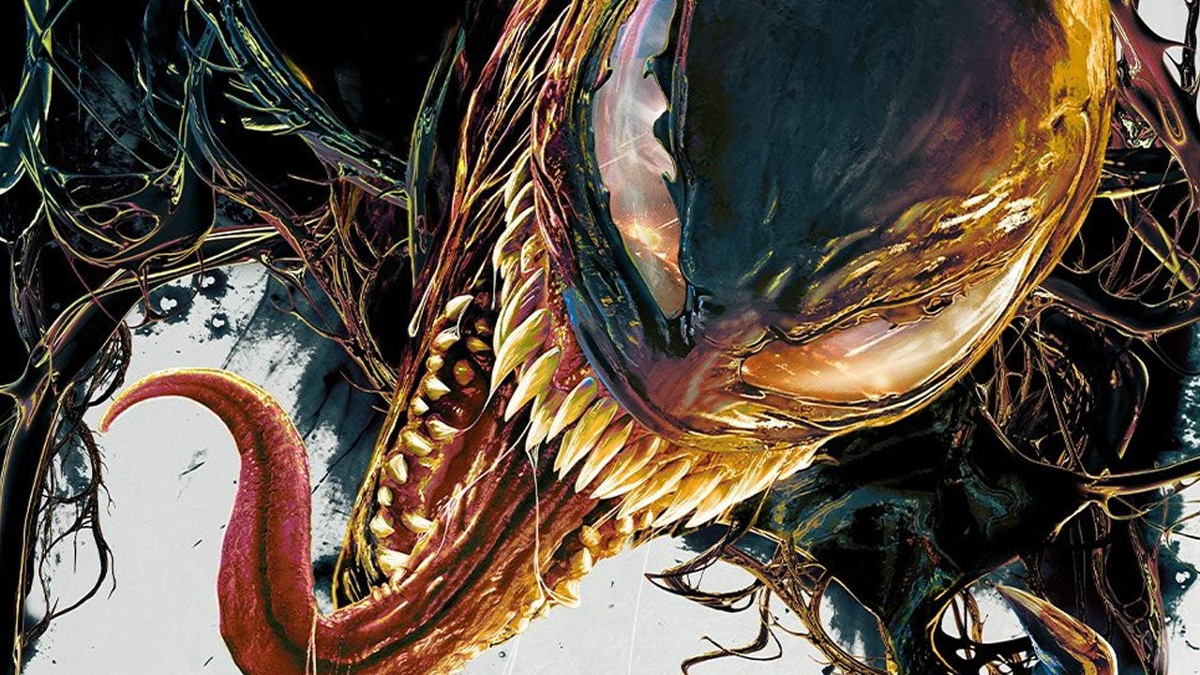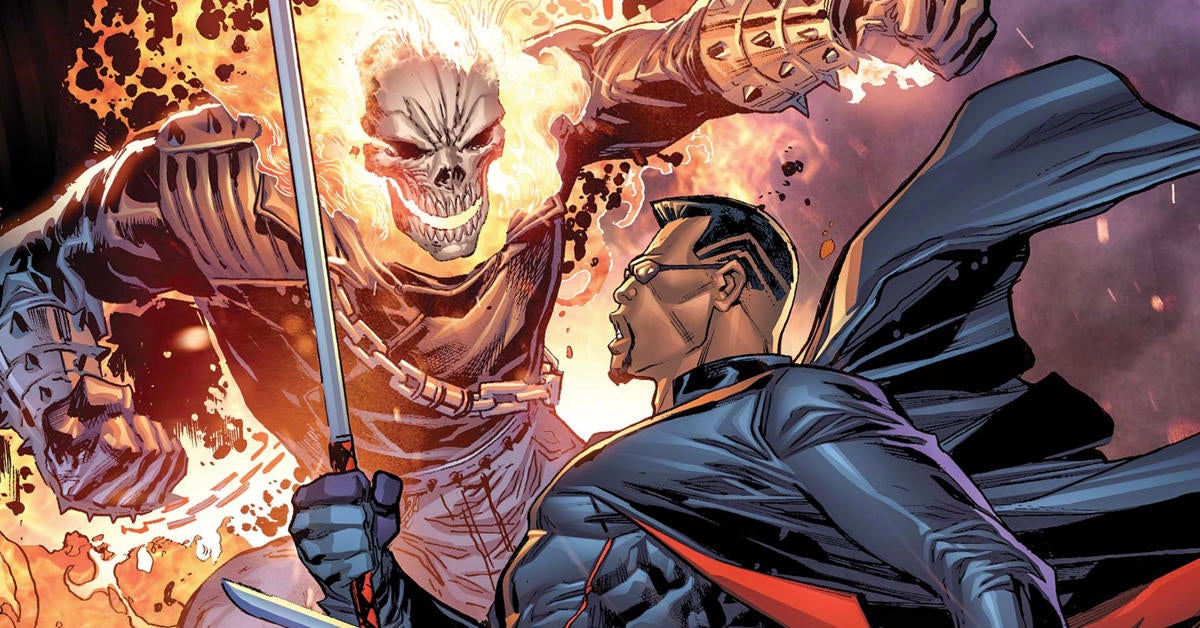The United States is currently wading through two recurring traditions simultaneously: the early fall Halloween season, in which most people indulge in the playfully demonic and monstrous, and the more seriously cursed election season, with 2024 being especially potent as it is a presidential election year. The two meet in The Exorcism at 1600 Penn #1, the first installment of a four-issue miniseries from writer Hannah Rose May, artist Vanesa Del Rey, colorist Jordie Bellaire, letterer Hassan Otsmane-Elhaou, and published by IDW Publishing. Though the combination of the political and the infernal may appear to be a superficial draw, The Exorcism at Penn 1600 #1 reveals greater depth in atmosphere and characterization as its inner darkness slowly creeps in.
The issue’s motifs are visually apparent on its opening page. Former United States Senator Kelly Doyle is delivering her fiery, optimistic inauguration speech following her swearing-in as the first female President of the United States. Yet, the scene looks anything but sunny, as grey clouds blot the sky and the Capitol Building looms behind, as if ready to consume her and everyone around her. It’s only a shame that staying true to how these traditions play out keeps the scene from occurring in front of the White House. Yet, once inside the president’s home, readers find it rendered like a haunted house with creeping shadows advancing from the edges and coloring that turns brackish or sickly in certain moments. Bellaire’s palette and technique combine with Del Rey’s thick lines and impressionistic facial features to create an unsettling sense of wrongness within the White House’s environment as if the entire place is ill without anyone realizing it.
Videos by ComicBook.com

But soon this malignance makes itself known. It isn’t long before the entire, once close-knit family (established by an almost unbelievably wholesome family dinner in the White House dining room early on) begins drifting apart as the pressures of being the first family drive a wedge. Kelly’s responsibilities as POTUS keep her away from her family, forcing her husband, Eric — a doctor who gave up his career to be first husband — to shoulder more parental responsibilities alone. Her son, Kevin, becomes all too willing to fit into a new circle of friends at his new school, even if it means sacrificing his relationship with his sister Mara.
Mara’s ostracization is the most acute and becomes the story’s cornerstone. She spends her days being ridiculed by her peers without backing from her brother. With her mother often absent, she receives some support from her father but spends most of the night doomscrolling on her phone. Del Rey pulls these posts out of Mara’s phone, making her compete with them for space within the panel, visualizing the mental anxiety this habit is causing her, taking up more and more space with each instance.
The deeper into doom-scrolling that Mara gets, the more she seems to awaken something supernatural lurking in the forgotten room of the White House that she has made her sanctuary. It’s in this room that Mara wakes after a nightmare of nuclear apocalypse. Following this is the issue’s only splash page, which places Mara and her consoling parents in a corner of light as the darkness, and whatever lurks within it, surrounds and threatens to consume them. Mara’s anxiety, or perhaps that of her entire family, is haunting them.

This isn’t a story specifically about corrosive media habits, even if it is a recurring point –another scene sees Del Rey’s brilliant layouts depicting shifting power dynamics as President Doyle goes from being in control during a press briefing to cornered as she’s barraged with bad-faith press questions. Mara’s plight is one aspect of a larger theme linking the infernal with mental health. While Mara spirals into depression, her mother is dealing with a crisis involving Havana Syndrome, that controversial diagnosis of a collection of mental health symptoms that have become fodder for conspiracies, seemingly linked here to something truly evil. The issue more subtly lampshades its focus on mental health in the repeated mention of Mary Todd Lincoln, the first lady who was Abraham Lincoln’s wife, whose history of manic episodes has led some historians and experts to believe she suffered from bipolar disorder. While the connection is not explicitly drawn in this issue, it may be that whatever lingers in the room Mara has been staying in had a hand in Mary Todd Lincoln’s struggles.
May’s dialogue can be offputting at times (the phrases “chicken tendies,” “trending number one on TikTok,” and “liked by The Rock” appearing in quick succession may have some readers wanting to tap out early on), but weaves an intriguing tale of family drama against a backdrop both political and supernatural. Del Rey’s layouts, particularly over two pages, are sometimes flashy to the point of distracting from the scenes they are meant to frame. However, with Bellaire’s moody colors, her artwork makes the White House seem possessed and conveys the fracturing of a family. Otsmane-Elhaou’s lettering drives home key character moments, using irregular speech bubbles conveying crucial changes in voice (though some additional variation may have helped distinguish one vocal alteration from another). While those flaws are present, The Exorcism at Penn 1600 #1 is an impressive debut that draws readers in slowly but will likely have them fully enthralled by the final page-turn.
Published by IDW Publishing
On October 16, 2024
Written by Hannah Rose May
Art by Vanesa Del Rey
Colors by Jordie Bellaire
Letters by Hassan Otsmane-Elhaou
Cover by Vanesa Del Rey







